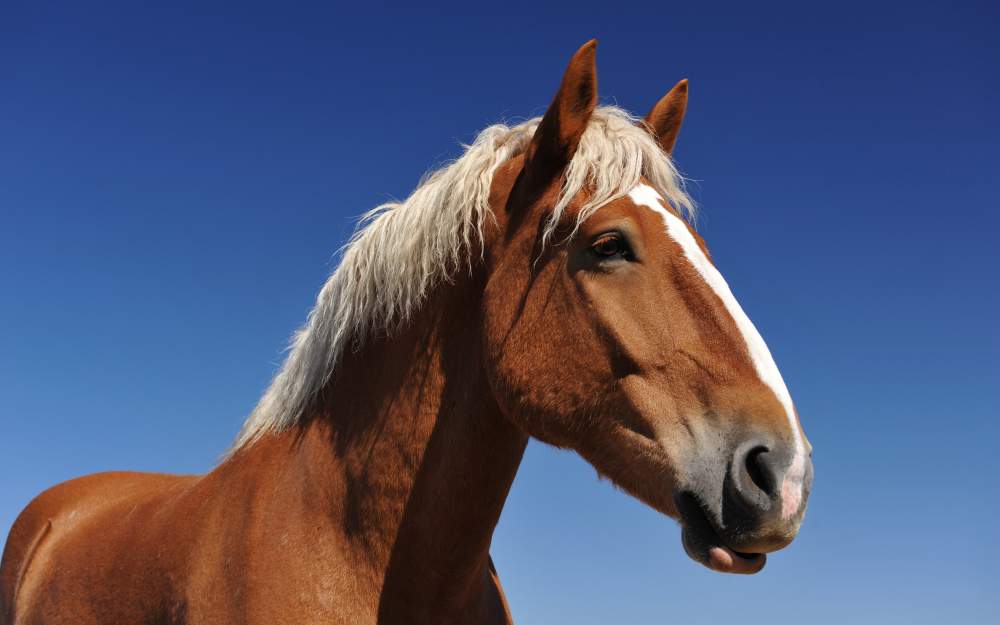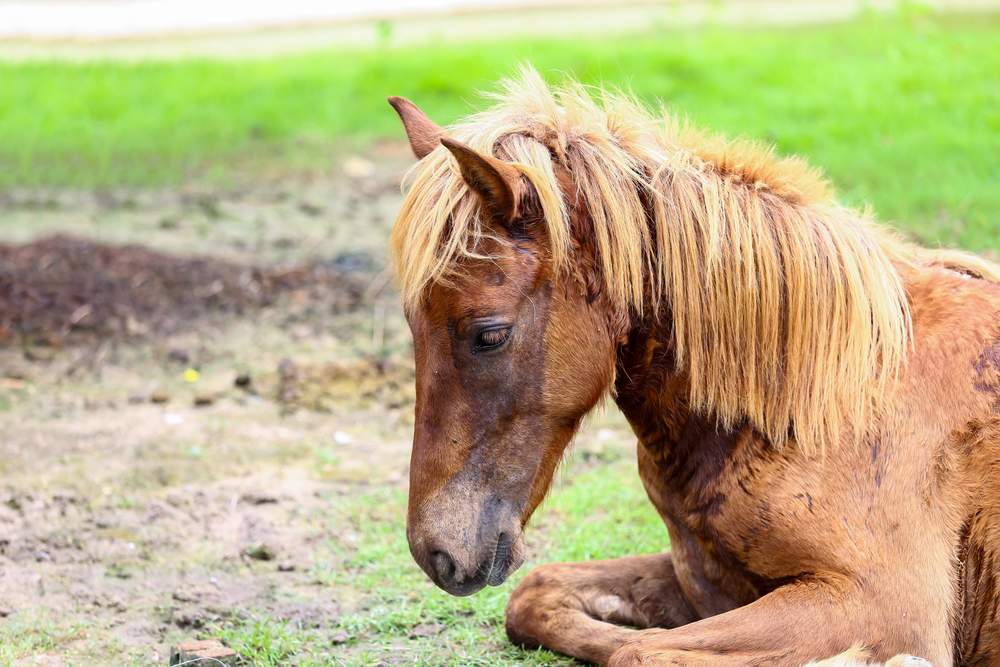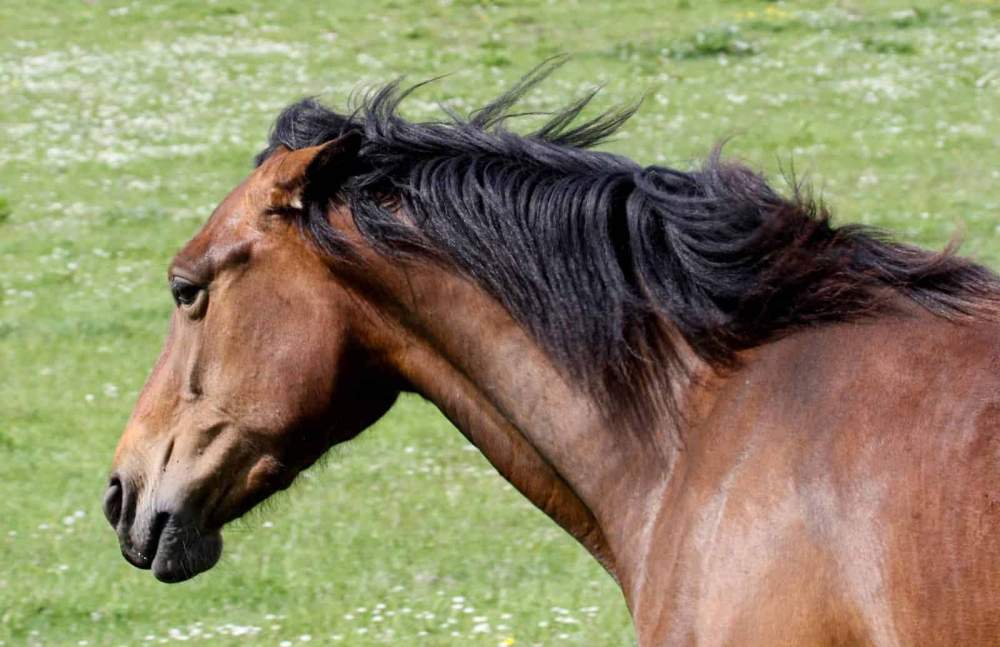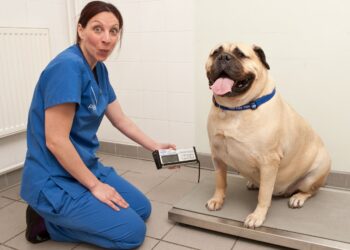Every horse owner knows it, and every year, it is no exception: he must take care of the deworming of his horse. What, for a long time, was regulated by giving dewormers four times a year, has become a complex subject, for which everyone has their opinion.
Why deworm a horse? What are the parasites in the horse? What are the signs of a worm infestation, and when to deworm it? How frequently? We will see the two main methods of deworming and will detail in particular reasoned deworming, an interesting alternative to systematic deworming. And to finish; we will give some general parasite prevention measures.
Why deworm a horse?
Regular deworming serves two major purposes: first, to keep horses healthy and ideally free of parasites, or as little contamination as possible to be more realistic. The second objective is to limit as much as possible the contamination of the environment and the associated risk of infestation, or re-infestation, by parasites. Because unfortunately, a contaminated horse releases eggs in its feces in the environment.
As they develop, these eggs will become larvae, then adult and mature worms, ready to infect another animal, or the same horse, and thus contribute to the infernal cycle of parasitism.
Reading suggestions; 500 Horse and Racehorse Names
What are the parasites in the horse?
Many parasites can infect the horse.
Three groups of parasites
How do I know if my horse has worms?
If a horse is suffering from a heavy parasite infestation, there are certain signs that can be noted in its physical appearance.
Classic signs of infestation
The signs:
In addition, the horse shows general apathy and declining performance. Depending on the severity of the infestation and the type of parasite, infection with intestinal worms can even lead to colic, intestinal perforation, or intestinal obstruction (potentially fatal). Do not neglect intestinal worms: both to protect your horse against the consequences of contamination (sometimes serious), and also to keep him in shape throughout the grazing season.
Can we see worms with the naked eye?
Some owners sometimes take a quick shortcut, thinking that if they don’t see worms in their horse’s droppings, then they don’t! Unfortunately, it is not that simple. Of course, the parasites reproduce well in his body and their eggs are found in the horse’s feces. But sometimes they are so small that it is not possible to see them with the naked eye.
Indeed from the eggs present in the dung, the larvae will hatch, then go through different stages of development. In the end, they will be ingested, either directly by browsing the grass (or hay), or by an intermediate host (for example a mite). In this way, the infernal cycle of reproduction and recontamination of the parasites is perpetuated.
Reading suggestions; 500 Horse and Racehorse Names
When to deworm your horse?
Horse deworming: how many times a year?
It is recommended to deworm an adult horse between two and four times a year.
At what time of the year to deworm your horse?
Two dates are of particular importance in the deworming protocol: the first is in spring, at the start of the grazing season, and the second in autumn, when the paddocks are closed. As pastures are the most common source of infection, it is recommended that you deworm during the grazing season as well.
And to better control the three groups of parasites, it is advisable to distribute your efforts by concentrating in the spring on the roundworms, in the summer on the roundworms as well as the tapeworms, at the end of the summer again on the roundworms. roundworms, and finally, after the grazing season, on roundworms, tapeworms, and on the larvae of gastrophiles.
What dewormer, in what season?
The active substances differ depending on the parasites that you want to treat.
In spring, in April-May: treatment against roundworms (small and large strongyles, Ascaris, and Strongyloides).
In summer, in June-July-August: same treatment as in spring against roundworms, but with the addition of treatment against tapeworms.
At the beginning of autumn, in September-October: treatment of roundworms and tapeworms as in summer. In autumn-winter: treatment of roundworms, tapeworms, and gastrophiliac larvae. For the last deworming of the year in autumn-winter, weather conditions must be taken into account. Indeed,
if the summer was hot and dry, it will be necessary to postpone this deworming and to do it in October or November. On the other hand, if the summer was rainy and the autumn dry, it can take place at the beginning of December.
Special cases: the pregnant mare and the foal
Broodmares
During gestation, mares can be dewormed with Moxidectin. In broodmares, it is necessary to treat immediately after foaling, the larvae of Strongyloides (tiny roundworms which pass through the milk of the suckling) with Moxidectin. This will reduce the risk of infestation in foals. Thereafter, broodmares should be treated at intervals of approximately 8 weeks until the foal is weaned.
Foals and young horses
Foals should be dewormed for the first time at about 2 weeks of age with Fenbendazole. In addition, treatment with Pyrantel to fight roundworms is recommended from the eighth week. Subsequently, it is advisable to take further treatment measures at 6-week intervals to protect it during its development. From the 4th to – 8th month of life, the use of Moxidectin to fight against small strongyles is possible.
How to deworm your horse?
Horse parasitism experts now recommend two distinct approaches to deworm your animal: “systematic deworming” and “reasoned deworming”.
Systematic deworming, the classic method
During a systematic deworming, all the horses in a structure are dewormed in groups, regularly, on dates determined and planned in advance. It is, therefore, necessary to be attentive to the families of parasites to be treated according to the seasons, and it will therefore be necessary to administer different active substances at different times of the year.
Weak points of systematic deworming
Training for the horse’s body, but without really knowing if there is contamination
Such a deworming treatment is tiring for the horse’s body: powerful chemicals are imposed on its body. Especially since you do not know, in reality, if your horse is infected or not, and if so, by what specific types of worms.
It’s like guessing which worms or other parasites are infesting your horse. Repeating treatments leads to resistance to the active ingredients of dewormersThere are only a limited number of groups of active substances available on the market. This means that the parasites are confronted with the same active ingredients at regular intervals and that they, therefore, become resistant to them. It is for this reason that more and more veterinarians and specialists favor reasoned deworming, the second route.
Reasoned deworming: the other method
Where did the interest in this method come from?
Recently, researchers have found that worms are increasingly resistant to dewormers. This is not new: there has always been a minority of isolated worms resistant to the active ingredients of dewormers, especially since the number of molecules is limited. However, the more we kill the worms sensitive to treatment (therefore not resistant), the more resistant worms will be able to multiply.
In the long term, it is therefore important for the health of equines that a sufficient number of worms sensitive to the treatment survive … If we managed to kill them all by continuing systematic deworming, only resistant worms would remain, and then the drugs would no longer be of much use …
An alternative to systematic deworming
We start with a test phase to identify infected horses
We had to find an alternative to classic deworming, in which we treat all the horses in a structure at the same time and with the same dewormer. Called “reasoned deworming”, this new approach aims to treat only horses for which parasitic contamination has been detected thanks to a previous examination. This method takes into account all the endoparasites of the horse, whatever they are: small and large strongyles, roundworms, cestodes, intestinal filiform worms, pinworms, and larvae of the fly.
After colposcopy, only strong egg excretion is dewormed
Thanks to a colposcopy (analysis allowing the counting and observation of the eggs of the parasites), we will be able to measure the number of eggs in a sample of dung. In this way, it will be possible to identify “high shedding” horses (for strongyles, more than 200 eggs per gram) and distinguish them from “weak shedding” (less than 200 eggs per gram).
“High creators” represent only 20% of adult horses, yet they are responsible for 80% of environmental contamination. Thus, in the long term, reasoned deworming will allow an overall reduction in the contamination of the horse. environment by worms and their larvae.
How many deworming?
During the first year, dung samples will be collected first every 42 to 60 days, then approximately every 90 days. The “strong shedders” of eggs will be treated with an adequate deworming treatment prescribed by the veterinarian who will then verify the success of the treatment by means of a test for the reduction of the number of fecal eggs.
If necessary, the treatment will be For parasites other than strongyles, it will also be a question of deworming as soon as the result of an analysis is positive! On the other hand, for tapeworm, only one horse needs to be tested positive, and it will be necessary to treat the whole herd.
Weak points of reasoned deworming
This method is interesting, and its results are good, but it also has some drawbacks, which are good to know.
The eggs are not uniform in the dung
Worm eggs are not distributed evenly in the dung. It may therefore happen that the sample taken contains a lot of it, or conversely very little. In this case, the test result will not reflect the reality of the horse’s infestation. In addition, it is not certain that the eggs of the worms are continuously excreted.
The eggs of certain parasites are not found in the dung
All worms are not the same, some migrate inside the horse’s body: through the intestinal mucosa, through blood and lymph to the heart, lungs, or even the liver. Organs are sometimes severely affected. Sexually mature worms then often attach themselves to the lining of the large or small intestine and lay eggs there, which end up in the horse’s feces.
Case of tapeworms and pinworms
Tapeworm and pinworms are somewhat different. The tapeworm attaches itself to the lining of the small intestine and releases a piece of its body in which there are eggs. Female pinworms migrate to the anus and lay eggs around the anus. These two worms do not lay their eggs directly in the horse’s feces, and will therefore be difficult to detect by colposcopy …
Tests for these 2 species of parasites
Pinworm eggs can be detected with a scotch-test: the veterinarian will apply a transparent tape to your animal’s anus where the eggs will stick in case of contamination, then look for their presence under a microscope.
Tapeworm is more difficult to detect because the tests (colposcopy, as well as the ELISA test performed on a saliva sample or through a blood test) are not completely reliable. The colposcopy only makes it possible to identify very heavy infestations, and the ELISA test gives many false positives.
Highly parasitized horses may not be shedding many eggs
It can happen that in horses very contaminated by parasites, one finds in their dung only a small quantity of eggs. In this case, they would not receive treatment as part of a reasoned deworming, and this could be dangerous for their health. However, the majority of veterinarians believe that this risk remains limited.
Reading suggestions: 6 Most Common Horse Diseases
In addition, remember that a light infestation can even be considered positive for the health of the horse, in that it stimulates its immune system. Nevertheless, it is absolutely necessary to administer a dewormer to the horse if the test values exceed the threshold value (by giving it a drug prescribed by a veterinarian, and no herbs).
Prevention of interference
After deworming: some measures to follow
After the horse has received its dewormer, depending on the active ingredient used, you will prohibit access to the paddock for two to three days, because during this time it will excrete massively worms, larvae, and eggs in its droppings. Then completely empty all the boxes, and clean them. It will also be necessary to clean up the pastures (remove and get rid of the dung) before being able to resume the pasture.
Hygiene rules related to roundworm contamination
Hygiene in pastures and in stables is particularly important to prevent ascarid infestation as much as possible. In practice, this means daily cleaning in the stable and, in case of roundworm contamination, removing the manure. This is important because their eggs can survive for a long time. Horses should not then eat the hay directly from the ground, but from a rack or hay nets, at least for a transitional period.
It will also be necessary to disinfect their boxes at least once a year with an approved disinfectant and to clean the walls and the drinking trough regularly. Carefully remove dung from grazing areas, collecting it at least twice a week. Then you can also use calcium cyanamide to fertilize the soil in the spring.










